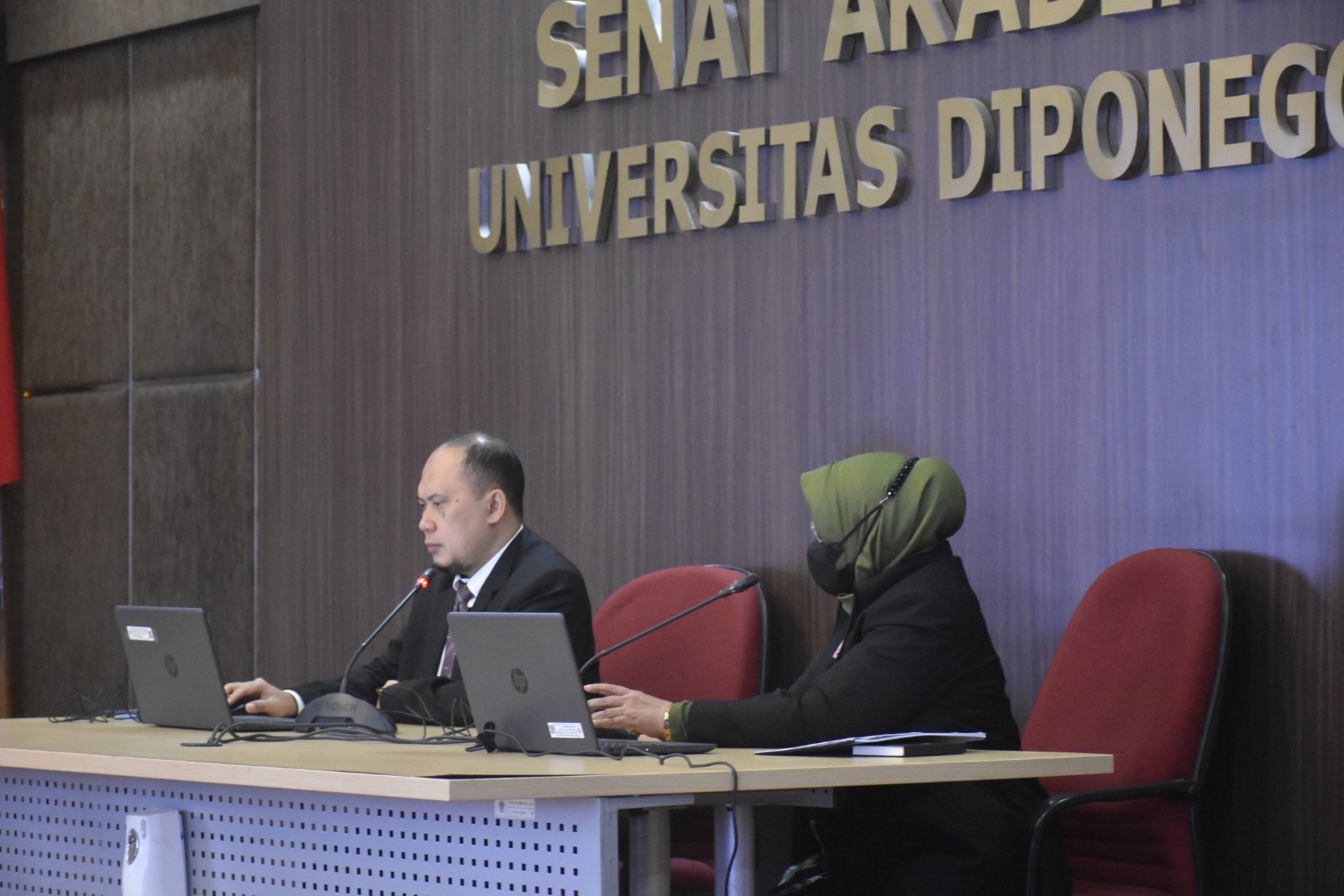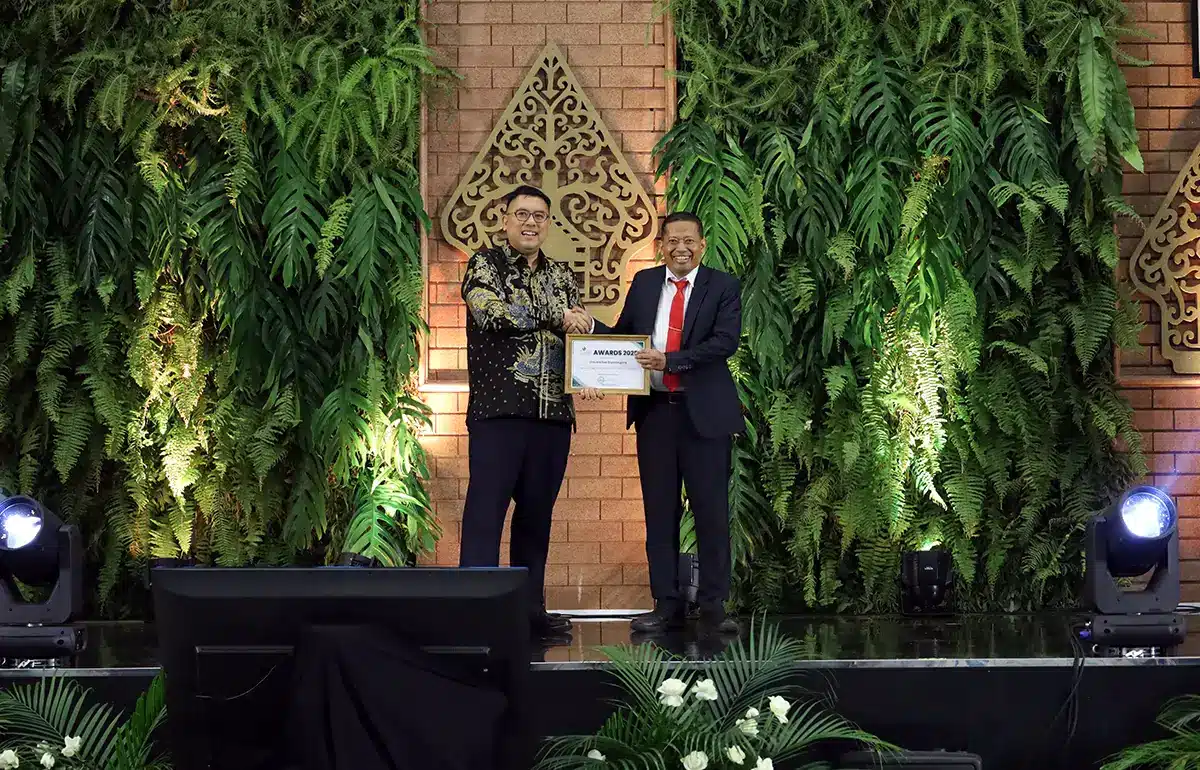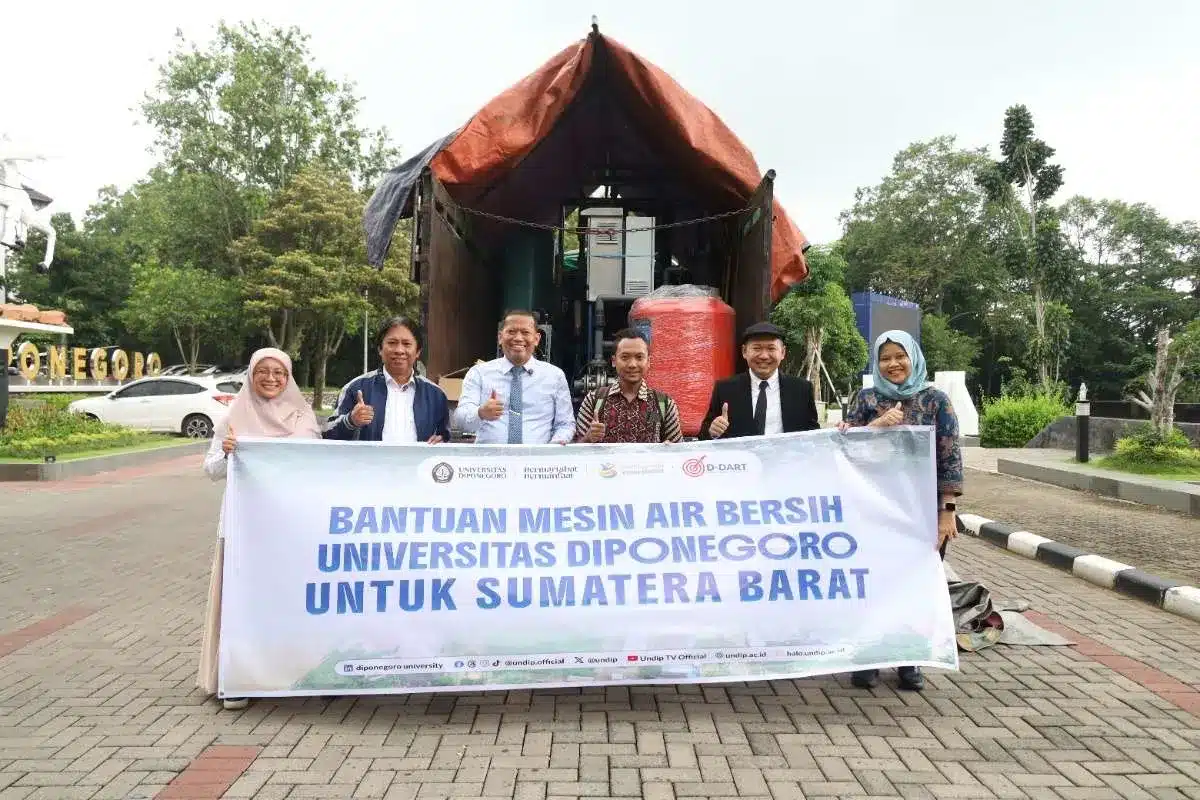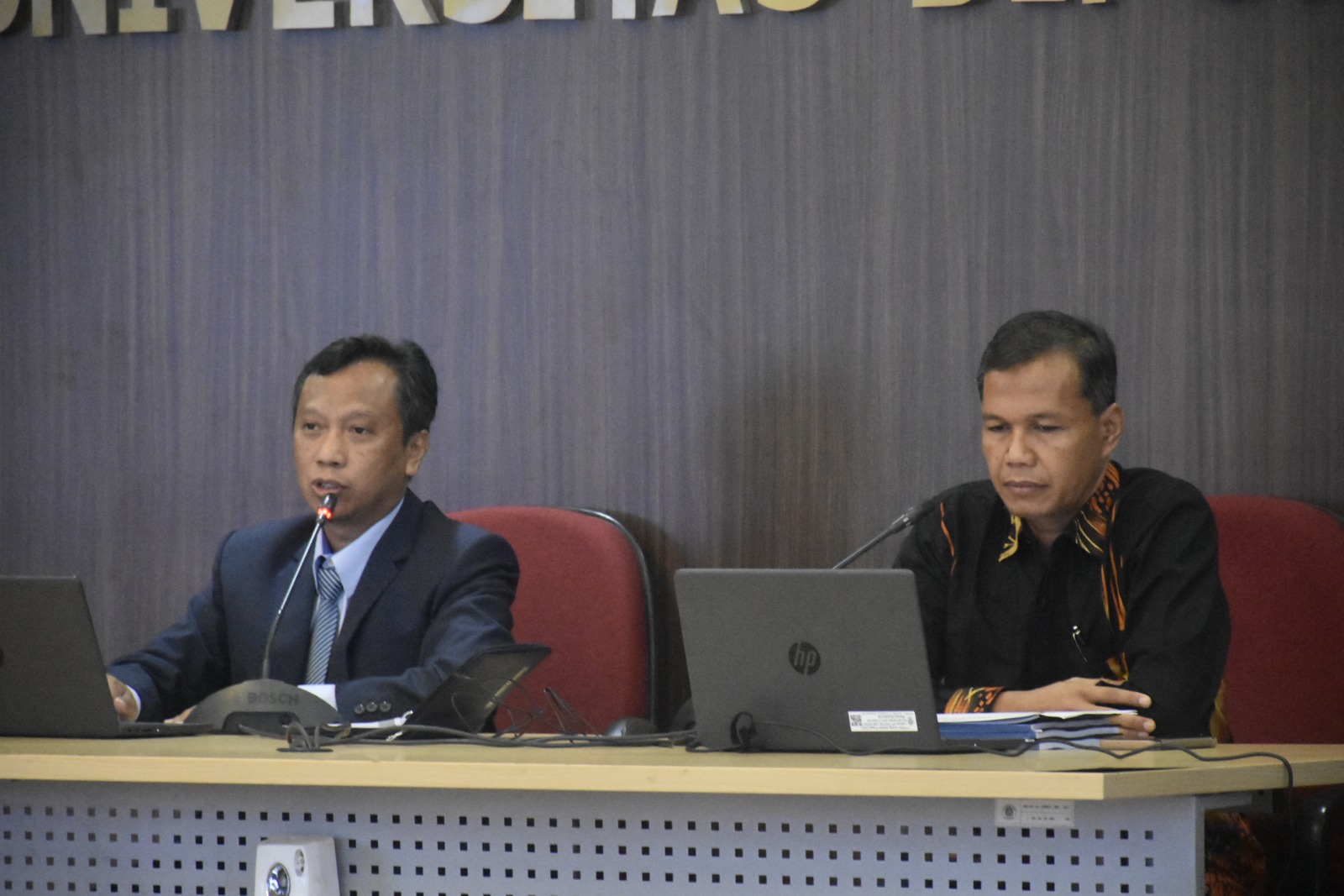Three Prospective Diponegoro University Professors presented their scientific papers in a presentation session organized by the Diponegoro University Board of Professors, Thursday (13/4). The three prospective Professors include Dr. Ir. R. Rizal Isnanto, S.T., M.M., M.T., IPU, ASEAN Eng. (Faculty of Engineering), dr. Achmad Zulfa Juniarto, MSi.Med, M.M.R., Sp. And Subspec FER, Ph.D. (Faculty of Medicine), and Bagus Hario Setiadji, S.T., M.T., Ph.D. (Faculty of Engineering).
In his presentation entitled Biometric Systems for Identification Using Techniques in Image Processing and Pattern Recognition, Dr. Rizal conveyed that the biometric system means self-recognition systems or technology using body parts or human behavior. There are two types of biometrics systems that are known, namely biometrics systems based on systems in humans that can be seen (vision-based) and those that cannot be seen (non vision-based). The most commonly used system in biometric is vision-based or the part of the human body that can be seen as a differentiator and can be imaged.
“This research is about the recognition of five biometric characteristics, namely fingerprints, palms, irises, retinas, and faces using techniques in image processing and pattern recognition. Pattern recognition in question is pattern recognition of the image being reviewed. A self-recognition system or identification is a system for automatically recognizing a person’s identity using computer technology. Of the five biometric iris characteristics, the highest recognition occurs in the recognition of palms and irises. By utilizing the biometric system, it allows the application of one individual – one identifier or single identity, so that a person no longer needs to carry multiple identities for himself,” he explained.
In his presentation, dr. Zulfa explained material on Disorders of Sex Development in Indonesia: The Natural Process and Its Implications of a Gradual Multidisciplinary Approach. Disorder of Sex Development (DSD) are congenital abnormalities that occur in the development of chromosomes, gonads, as well as the anatomy of internal or external genitalia. The determination phase is the initial phase of the development of the reproductive system. Any disturbance in this phase has the potential to cause DSD. This disorder often manifests in the form of external genitalia that are not clearly male or female and can also display images of both sexes in an individual.
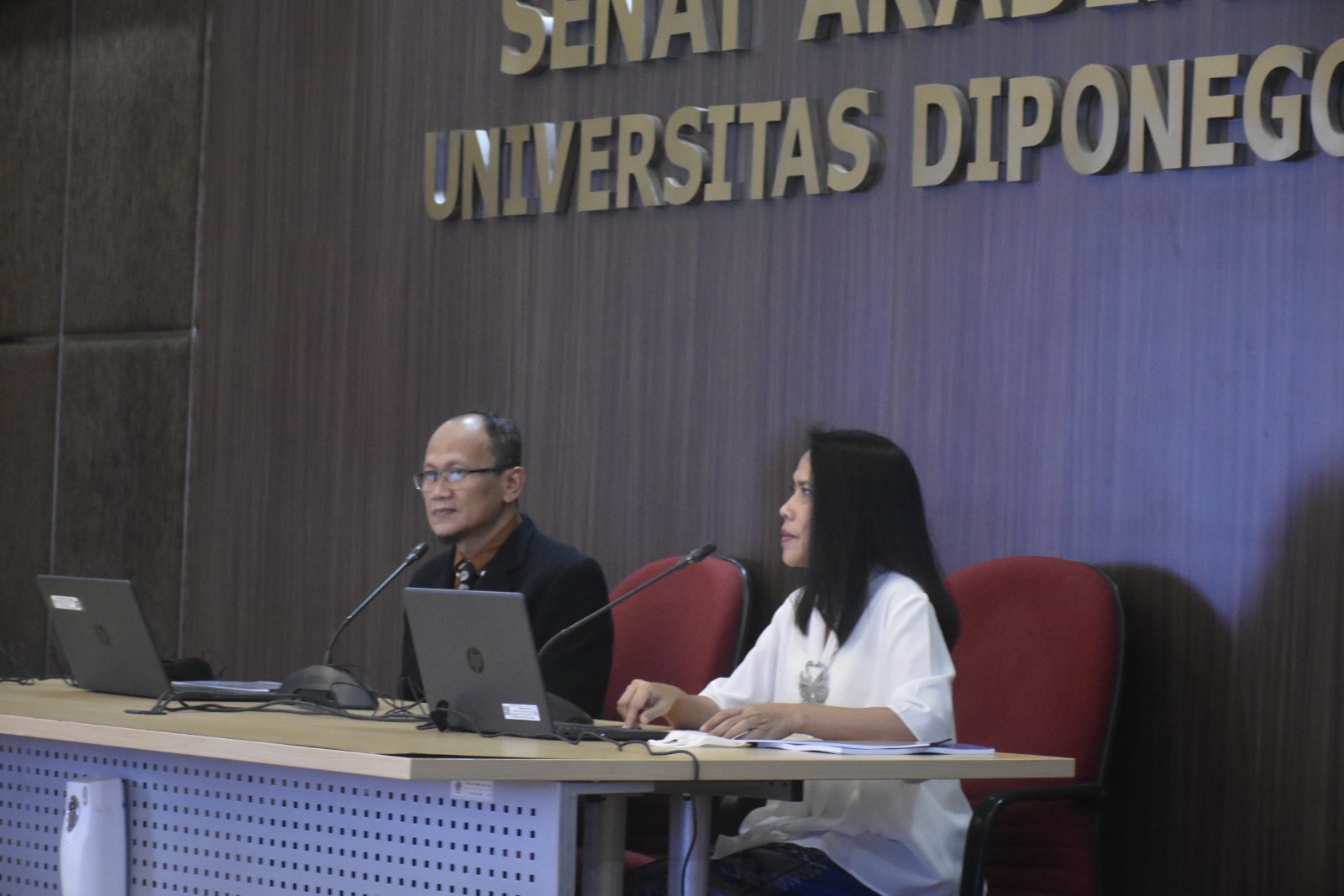 “Optimal service to children with DSD requires a multidisciplinary team that starts from the neonatal period. Family and pregnancy history, complete physical examination, and anatomic assessment of the internal and external genitalia are the first steps in making a correct diagnosis. Follow-up examinations in the form of hormone analysis, anatomical and molecular pathology were carried out to obtain a final diagnosis. In particular, the management of DSD children focuses on gender determination, hormone support therapy, and surgical management, which in the end is to achieve an optimal quality of life for the patients,” explained dr. Zulfa.
“Optimal service to children with DSD requires a multidisciplinary team that starts from the neonatal period. Family and pregnancy history, complete physical examination, and anatomic assessment of the internal and external genitalia are the first steps in making a correct diagnosis. Follow-up examinations in the form of hormone analysis, anatomical and molecular pathology were carried out to obtain a final diagnosis. In particular, the management of DSD children focuses on gender determination, hormone support therapy, and surgical management, which in the end is to achieve an optimal quality of life for the patients,” explained dr. Zulfa.
Meanwhile, Bagus Hario Setiadji, Ph.D. discusses the Development of Road Condition Evaluation Methods for Optimizing the Level of Stability of Meshes. According to him, road stability is a parameter set by the Directorate General Bina Marga as a performance indicator to be achieved every year. To be able to optimize the level of road stability, the activity of collecting road damage data and evaluating road conditions, both structural and functional conditions, is the first process that must be carried out to determine the existing conditions of road conditions so that the appropriate type of treatment can be determined.
“The manuscript of this scientific work was prepared to convey several proposed solutions that have been researched to overcome the problems of carrying out measurements and evaluations of road conditions on provincial and district or city roads. Regarding the measurement and evaluation of road functional conditions, survey methods have been developed using outdoor cameras to increase efficiency and effectiveness when collecting road damage data, and to develop a Surface Distress Index (SDI) damage index that is more accurate than the current SDI damage index,” he explained. (Lin-Public Relations)
